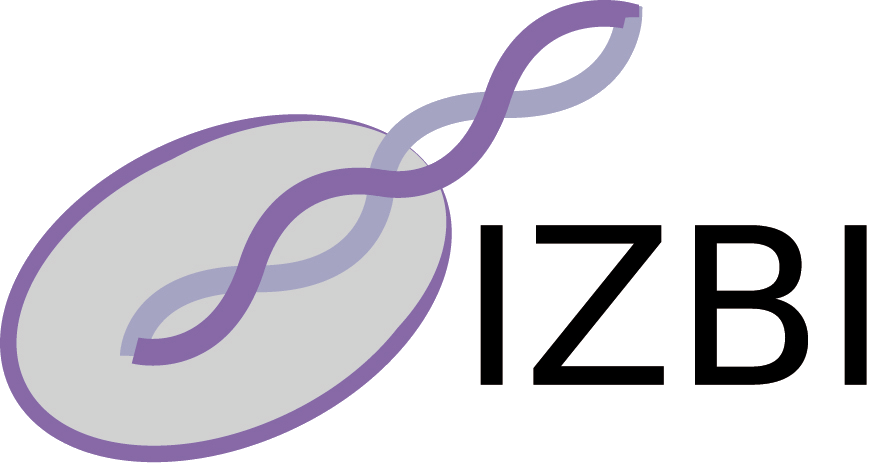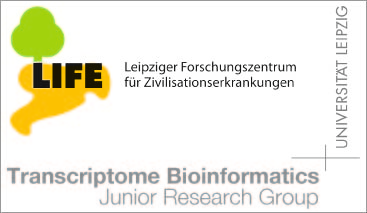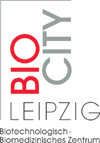Here we collect information for all four parts (lecture, special lecture, seminar, and practical course) of the module Graphen und Biologische Netze.
Die 3. Spezialvorlesung findet am 21.12. um 11 Uhr statt!
Current deadline for finding a paper is November, 11th.
papers with graph-theoretic content from the past 12 months (approximately):
graph theory papers or bioinformatics with graph theory content
not obviously trivial. Will not be checked by us. Use 'common sense'. I.e.
don't choose papers where the only graph-theoretical content is a drawing of a
circle.
first email in (*according to my inbox time stamp*) counts at choener@bioinf
send me one paper title, I won't select for you. Email body should contain:
your name, paper title, year, journal, authors, link to paper (see below for
examples in the program)
use a meaningful email subject header, maybe "Graphen + BioNetze, Seminar,
2016, Paper"
if your choice doesn't show up after November, 11th, send a gentle reminder
[Ulrike Klotz] Graph Theory Enables Drug Repurposing - How a Mathematical Model Can Drive
the Discovery of Hidden Mechanisms of Action; 2014 ; PloS One ; Gramatica et al
link
[Anastasia Wolschewski] "APPAGATO: an APproximate PArallel and stochastic GrAph
querying TOol for biological networks." , 2016, Bioinformatics,
Bonnici, Vincenzo, et al. , link
[Kathleen Wende] Calderone, Alberto, et al. "Comparing Alzheimers and
Parkinsons diseases networks using graph communities structure." BMC
systems, 2016
[Sebastian Luhnburg] Network-Thinking: Graphs to Analyze Microbial Complexity
and Evolution; 2016 Mar; Elsevier; Eduardo Corel, Philippe Lopez, Raphaël
Méheust, and Eric Bapteste; link
[Marius Brunnert] New Biology Inspired Anonymous Distributed Algorithms to
Compute Dominating and Total Dominating Sets in Network Graphs ; 2016 ; PDPS workshop 2016 ; Luo et al
link
[Marcel Winter] Algorithms for Visualizing Phylogenetic Networks, 2016
, Ioannis G. Tollis, Konstantinos G. Kakoulis
Appears in the Proceedings of the 24th International Symposium on Graph
Drawing and Network Visualization (GD 2016)
link
[Alexander Scholz] L-GRAAL: Lagrangian graphlet-based network aligner,
2015, Oxford University Press, Noel Malod-Dognin and Natasa Przulj,
link
[Christian Heide] Fimmel, E., Michel, C. J., Struengmann, L. n -Nucleotide
circular codes in graph theory. Philosophical Transactions of the Royal Society
A: Mathematical, Physical and Engineering Sciences 374, 20150058 (2016)
link
[Markus Michaelis] "Analysis of Network Clustering Algorithms and Cluster
Quality Metrics at Scale", 2016, PLOS ONE, Emmons et al link
[Sebastian Lange] Elhesha, R. & Kahveci, T., Identification of large disjoint
motifs in biological networks, BMC Bioinformatics, 2016 link
[Sophie Wolf] A random graph model of density thresholds in swarming cells, 2016, Journal of Cellular and Molecular Medicine, S.G. Jena,
link
[Stefan Kraemer] The unrooted set covering connected subgraph problem
differentiating between HIV envelope sequences, European Journal of Operational
Research, 2016, Stephen J. Maher, John M. Murray, link
[Maik Froebe] SYNC or ASYNC: Time to Fuse for Distributed Graph-Parallel
Computation, 2015, ACM SIGPLAN Symposium on Principles and Practice of Parallel
Programming, link
[Michael Rode] Learning from Co-expression Networks: Possibilities and
Challenges, 2016, frontiers in plant science, Elise A. R. Serin, Harm Nijveen,
Henk W. M. Hilhorst and Wilco Ligterink link
[Alexander Engler], Proteome rearrangements after auditory learning:
high-resolution profiling of synapse-enriched protein fractions from mouse
brain., 2016, Journal of Neurochemistry, Thilo Kaehne et al.,
link
[Stephan Thoenes] Graphical algorithm for integration of genetic and biological
data: proof of principle using psoriasis as a model, Lam C. Tsoi, 2015,
Bioinformatics, link
[Florian Maeschle] Theoretical knock-outs on biological networks,2016, Journal
of Theoretical Biology , Pedro J. Mirandaa et al link
[Adarelys Andrades] Network Reconstruction Based on Proteomic Data and Prior
Knowledge of Protein Connectivity Using Graph Theory, 2015, PLoS ONE, Stavrakas
et al., link
[spaeter!]
[Yves Annanias] Graph theory analysis of complex brain networks: new concepts
in brain mapping applied to neurosurgery, 2016, Journal of Neurosurgery,
Michael G. Hart, MBChB, Rolf J. F. Ypma, PhD, Rafael Romero-Garcia, PhD,
Stephen J. Price, FRCS (Neuro.Surg) and John Suckling, PhD1, link
[Felix Helfer] Graph theory illustrates spatial and temporal features that
structure elephant rest locations and reflect risk perception, 2016, Ecography,
George Wittemyer, Laura M. Keating, Fritz Vollrath and Iain Douglas-Hamilton,
link
[Thilo Muehl-Benninghaus] Anticipation-related brain connectivity in bipolar
and unipolar depression: a graph theory approach; Anna Manelis, Jorge R. C.
Almeida, Richelle Stiffler, Jeanette C. Lockovich, Haris A. Aslam and Mary L.
Phillips; 2016 link
[Akber Sarchaddi] Small World architecture in brain connectivity and
hippocampal volume in Alzheimerâ**s disease: a study via graph theory from EEG
data; 2016; Springer Science; Fabrizio Vecchio, Francesca Miraglia, Francesca
Piludu, Giuseppe Granata, Roberto Romanello, Massimo Caulo, Valeria Onofrj,
Placido Bramanti, Cesare Colosimo, Paolo Maria Rossini
link
[Marcel Gauglitz] Ion aggregation in high salt solutions. V. Graph entropy
analyses of ion aggregate structure and water hydrogen bonding network, 2016,
The Journal of Chemical Physics, link
[Joerg Walter] A novel analysis on the efficiency of hierarchy among
leader-following systems, 2016, Automatica, J.Shao et al., link
[Jeremias Schebera] Ungewissheit versus Unsicherheit in Sozialen Netzwerken,
2016, Diskussionsbeitraege der Fakultaet fuer Wirtschaftswissenschaft der
FernUniversitaet in Hagen , Wilhelm Raedder et al, link
[Jan Hendrik Witte] Distributed leader selection, 2015, CDC, Sergio Pequito,
George J. Pappas, Victor Preciado, link
20.02. -- 03.03..2017, jeweils 10:00 h -- 17:00 h
To prepare for the lab:
Read up on the molecular mechanisms of non-homologous
crossover and concerted evolution
Read the following rough outline of the research paper that
we will try to complete with this course
Read some backgroud information on important gene clusters,
e.g. [
Hox clusters ] [
Globin gene cluster ]
Read the paper [
Algebraic
Dynamic Programming over general data structures ],
we will be using the Hamiltonian path method to analyze our data
Artificial Life Framework (ALF) and the
paper
example file here
example output (for humanB45D.dat at -t 0.01)
here
here
here
In the lab
Implement a simulation of Type R Distance Matrices
without and with noise
as an iteration on distance matrices using equ.(4)
of the manuscript draft
modelling sequence evolution with non-homologous
crossover, gene conversion, and mutations (with artificial life framework)
Use Algorithm 2 from the draft to reconstruct
the sequence of events
Retrieve sequence data for several gene clusters that are made
up of paralogs and construct genetic distance matrices for them
Investigate whether they fit the R Distance Matrix model
Analyse the clusters with the Hamiltonian path method
At the end
we will as usual have a presentation/discussion
session on our results
Die minimal anfornderung zum bestehen des Prakikums
Registration
For the oral exam you need to register. Please register here. The information you provide will be for the Pruefungsprotokoll.
Main Lecture
The lecture is a blackboard-style lecture. There is no TeX script! Am 2.12.2016 (Dies Academicus) findet die Vorlesung statt! Das Thema ist 'Co-Graphen'.Special Lecture
Our topic will be a introduction into phylogenetic combinatorics with an emphasis on distance-based methods.Die 3. Spezialvorlesung findet am 21.12. um 11 Uhr statt!
Seminar
13.12. -- 15.12.2016, jeweils 11:30 bis 13:00 und 14:00 - 15:40 During the seminar, every participant will present recent work from the scientific literature. Stay tuned until friday.Current deadline for finding a paper is November, 11th.
Seminar Program
IMPORTANT: STICK TO 15 min presentations!
Session 1: Applications
Session 2: Algorithms
Session 3
Session 4: Gene Expression
Session 5: Brains and Ecology
Session 5: Social Networks and related topics
Practical Course
Die Praktikumsnachbesprechung ist am Donnerstag 9.3.17 um 16:30 Uhr im Raum 109.20.02. -- 03.03..2017, jeweils 10:00 h -- 17:00 h
Background
Gene clusters evolve through tandem duplication of single or sometimes multiple genes. These tandem duplications often arise through non-homologous crossover. This can lead to the introduction of new copies of genes that are recombinants of their neighbors.Together with the uneven rates of evolution often exhibited by paralogous genes with divergent functions and the possible action of concerted evolutions it becomes difficult to disentangle the details of their evolutionary history of a gene cluster.
Research Questions
In this year's lab course we are going to model the evolution of a gene cluster with simplified distance-based model and compare the predictions to real-life data of gene clusters.Tasks
[PDF]















